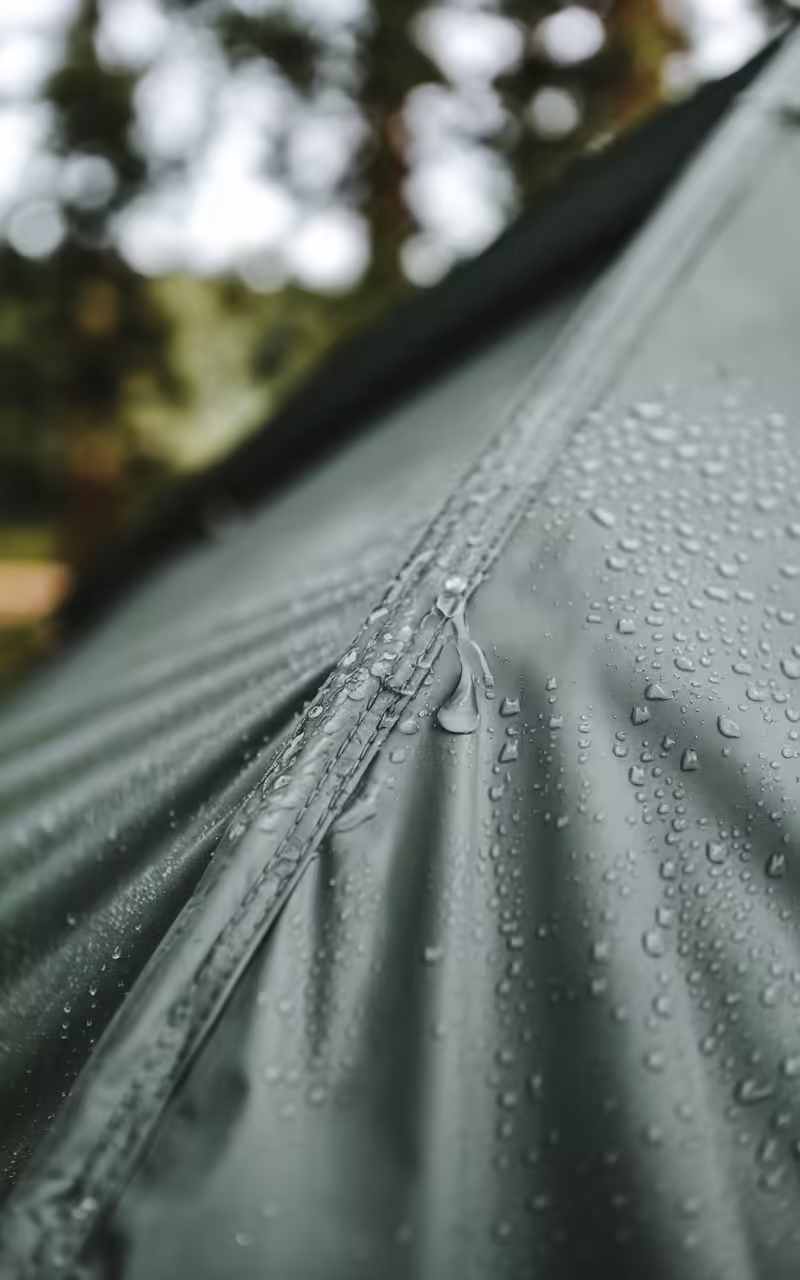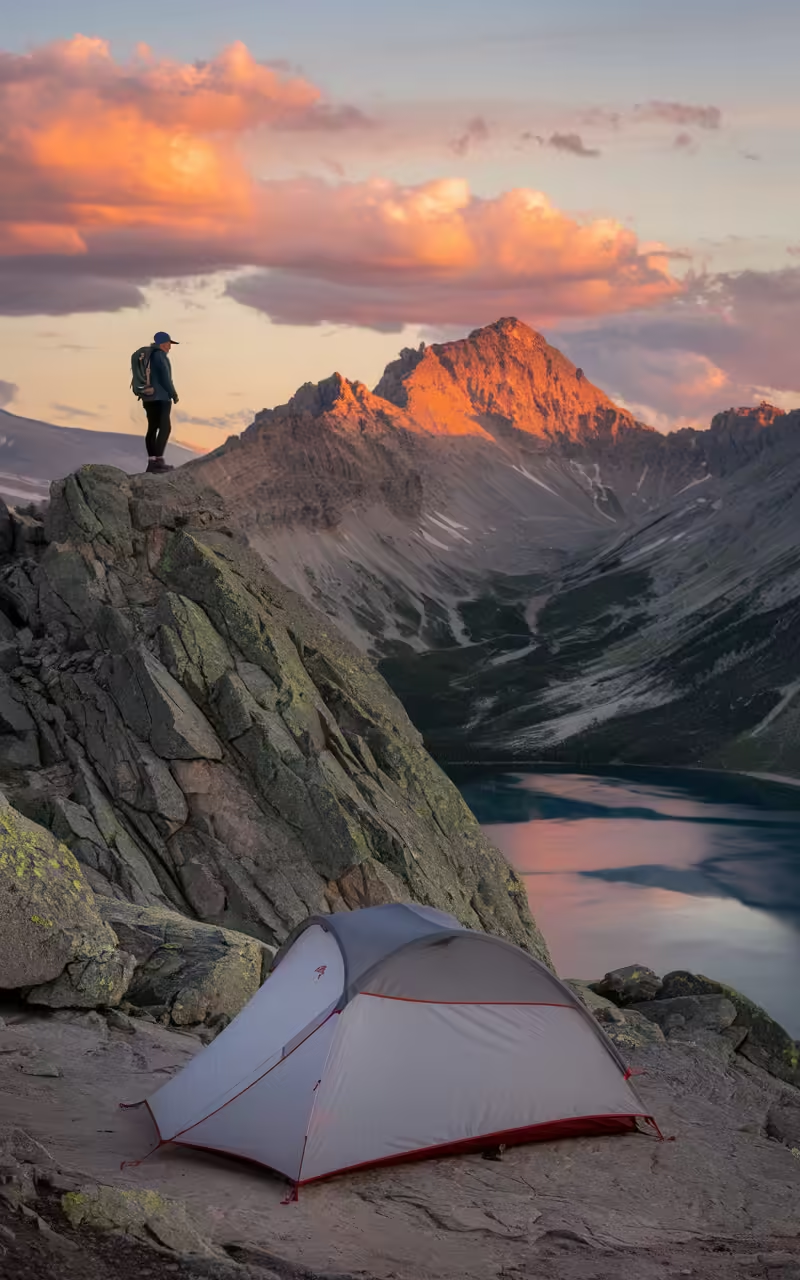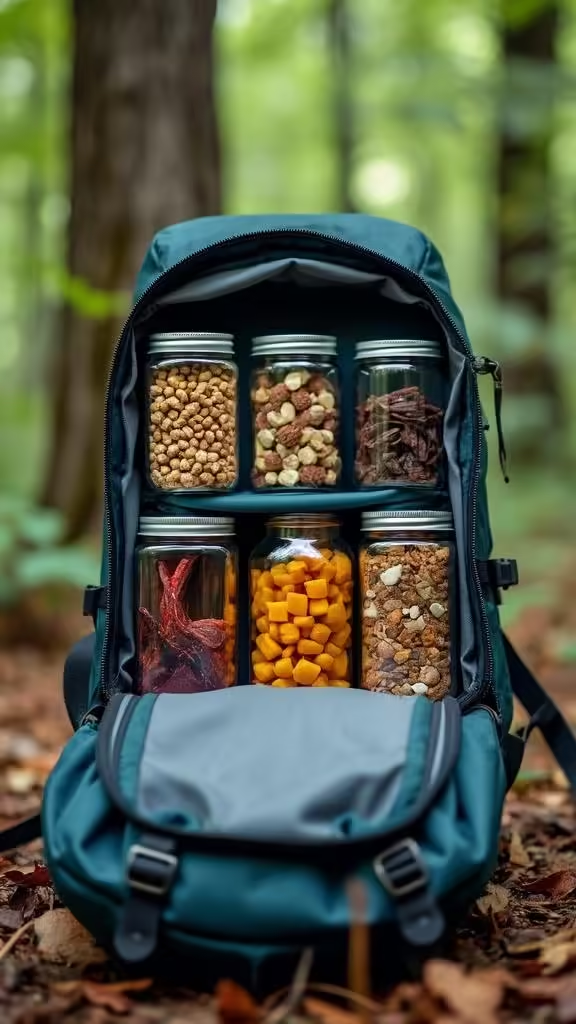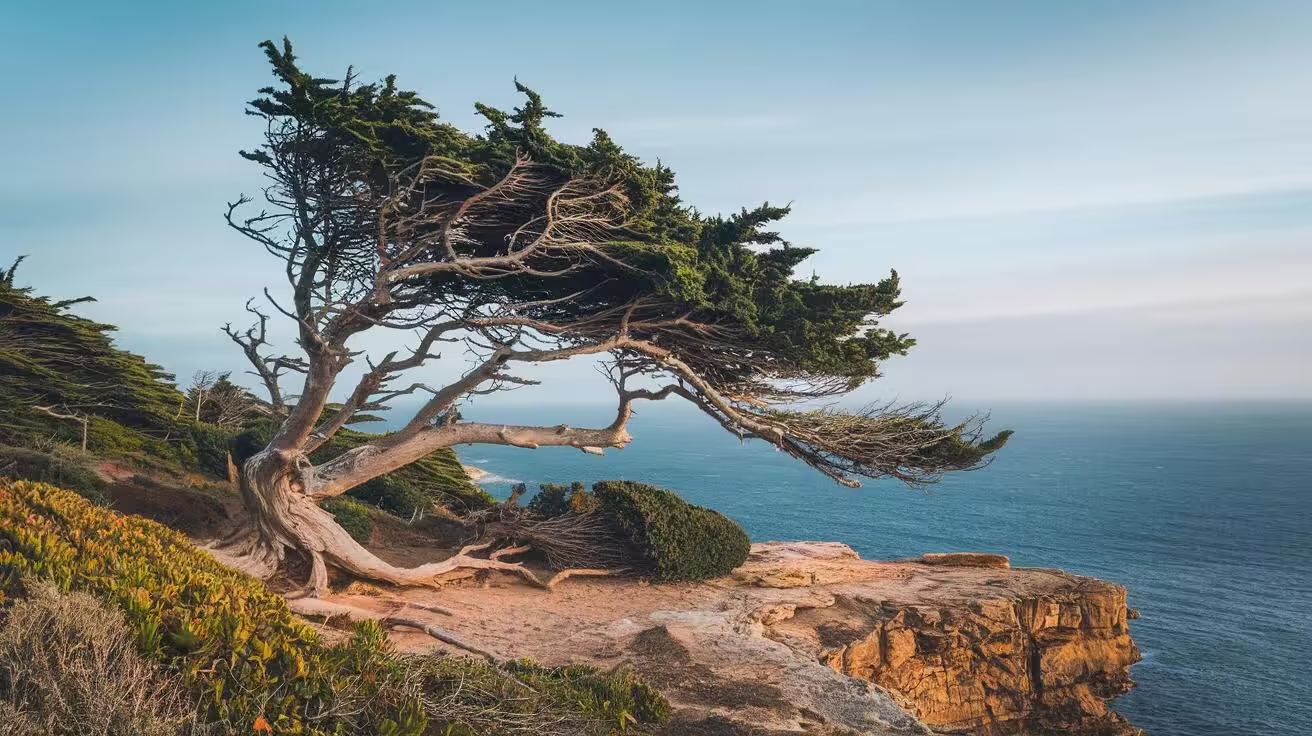Lightweight tents are the unsung heroes of solo backpacking.
They’re the difference between a grueling trek and an exhilarating adventure.
Trust me, I’ve been there.
On my first solo trip through the Rockies, I lugged a behemoth of a tent that felt like I was carrying a small car on my back.
By day three, my shoulders were screaming, and I was seriously considering building a lean-to out of sticks and leaves.
That’s when I realized: the right tent can make or break your journey.

Why Lightweight Tents Are Your New Best Friend
Imagine covering more ground, feeling fresher at camp, and actually enjoying the journey.
That’s the magic of going light.
A lightweight tent isn’t just about shedding pounds; it’s about enhancing your entire backpacking experience.
You’ll move faster, climb easier, and have more energy to soak in those breathtaking views.
Plus, your back will thank you.
The Secret Sauce: What Makes a Tent Truly Lightweight?
Not all lightweight tents are created equal.
There’s a whole science behind these featherweight wonders.
Let’s break it down:
Design Types: Your Tent’s Personality
Freestanding vs. Semi-Freestanding vs. Non-Freestanding:
- Freestanding: The extroverts of the tent world. They stand up on their own, no strings attached.
- Semi-Freestanding: The balanced middle child. Needs some staking, but not too needy.
- Non-Freestanding: The minimalists. Rely entirely on stakes and trekking poles. Ultralight, but a bit more work to set up.

Single-Wall vs. Double-Wall:
- Single-Wall: The sprinters. Lighter, faster to set up, but can be a bit clammy in humid conditions.
- Double-Wall: The all-rounders. Better ventilation, more versatile, but slightly heavier.
Materials: The Unsung Heroes of Lightweight Tents
Ever heard of Dyneema Composite Fabric (DCF)? It’s like the Superman of tent materials.
Incredibly strong, ridiculously light, and waterproof to boot.
But it comes with a superhero price tag.
For us mere mortals, high-quality nylon and polyester blends offer a great balance of weight, durability, and affordability.
The Weigh-In: How Light is Light Enough?
Here’s the million-dollar question: how light should your tent be?
For solo backpackers, anything under 3 pounds is considered lightweight.
Under 2 pounds? Now we’re talking ultralight.
But remember, the lightest tent isn’t always the best tent.
It’s about finding that sweet spot between weight, comfort, and durability.

Top Picks: The Cream of the Lightweight Crop
Alright, let’s get to the good stuff.
Here are my top recommendations for solo backpackers looking to lighten their load:
3FULGEAR Lanshan 2 Pro Tent 2 Person Ultralight Camping Tent
Weight: A mere 1 lb 3 oz
Design: Single-wall, non-freestanding
Material: Dyneema Composite Fabric
- Why it’s a winner:
- Incredibly lightweight without sacrificing space
- Excellent weather protection
- Surprisingly roomy for its weight
- The downsides:
- Pricey (but worth it for serious ultralight enthusiasts)
- Requires some practice to set up efficiently
The All-Rounder: Clostnature Crux Lightweight Tent
Weight: 2 lbs 6 oz
Design: Semi-freestanding, double-wall
Material: Ripstop nylon
- Why it shines:
- Great balance of weight, space, and features
- Easy to set up
- Excellent ventilation
- The not-so-great:
- A bit heavier than some ultralight options
- Can feel cramped for taller individuals

The Budget-Friendly Beast: Big Agnes Copper Spur HV UL
Weight: 2 lbs 1 oz
Design: Non-freestanding, double-wall
Material: 20D polyester
- What makes it special:
- Incredible value for money
- Spacious design with two doors and vestibules
- Great weather protection
- The drawbacks:
- Requires trekking poles for setup
- Can be tricky to pitch in tight spaces
Balancing Act: Features That Matter
When you’re trying to shave every ounce, it’s tempting to go for the bare minimum.
But some features are worth their weight in gold.
Vestibules: Your Outdoor Closet
A good vestibule is like having an extra room.
It’s a place to store your gear, cook in bad weather, and keep your muddy boots out of your sleeping area.
Some tents, like the Big Agnes Copper Spur HV UL, offer dual vestibules for ultimate organization.
Headroom: Because Hunching Isn’t Fun
There’s nothing worse than feeling like you’re in a coffin when you’re trying to change clothes.
Look for tents with a good peak height and clever designs that maximize interior space.
The REI Quarter Dome SL 1, for example, uses a clever pole structure to create near-vertical walls, giving you more usable space.
Ventilation: Breathe Easy, Sleep Dry
Good ventilation is crucial, especially in single-wall tents.
Look for features like mesh panels, adjustable vents, and double-wall designs to keep condensation at bay.
The Nemo Hornet Elite OSMO 2P is a master of airflow, with strategically placed vents that keep the air moving without letting in rain.
Setting Up Camp: The Easy Way
After a long day on the trail, the last thing you want is a wrestling match with your tent.
Here’s what to look for:
Simple, Intuitive Designs
Freestanding tents are generally the easiest to set up, but even non-freestanding options can be a breeze with a bit of practice.
Look for color-coded poles and clips that take the guesswork out of setup.
Trekking Pole Integration
Many ultralight tents use trekking poles for support, saving weight by eliminating tent poles altogether.
It’s a clever system, but make sure you’re comfortable with the setup process before heading into the backcountry.

The human touch: As someone who’s pitched tents in howling winds and pouring rain, I can’t stress enough how important an easy setup is. My Tarptent Aeon Li has saved my bacon more than once when I’ve rolled into camp exhausted and racing against nightfall.
Key Takeaway: When choosing a lightweight tent, consider the full picture
Weight, materials, design, and features – the perfect tent balances all these factors to match your specific needs and backpacking style.
Weathering the Storm: Choosing a Tent That Can Take a Beating
Let’s face it, Mother Nature doesn’t always play nice.
Your lightweight tent needs to be more than just a pretty face – it needs to stand up to whatever the wilderness throws at it.
Waterproofing: Beyond the Basics
A tent’s waterproof rating is measured in millimeters (mm) of water pressure.
For most backpacking conditions, look for:
- Fly and floor: 1500-3000mm
- Walls: 1200-1500mm
But numbers aren’t everything.
Pay attention to seam sealing, zipper covers, and bathtub floors for comprehensive protection.
Pro tip: Even with a great waterproof rating, always use a ground cloth to protect your tent’s floor.
Wind Resistance: Don’t Get Blown Away
A flapping tent in high winds is nobody’s idea of a good night’s sleep.
Look for:
- Low-profile designs
- Strong, flexible poles (aluminum or carbon fiber)
- Multiple guy-out points
The MSR Hubba Hubba NX is a champ in windy conditions, with its symmetrical design and robust pole structure.
Durability vs. Weight: The Eternal Struggle
Here’s where things get tricky.
Ultralight materials are often less durable than their heavier counterparts.
It’s a balancing act:
- 30D (denier) fabric: Ultralight, but handle with care
- 50-70D fabric: A good middle ground
- 100D+ fabric: Bombproof, but heavier
Remember, a tent that lasts for years is often worth a few extra ounces.
The Price Tag: Getting the Most Bang for Your Buck
Let’s talk money.
Lightweight tents aren’t cheap, but they’re an investment in your comfort and enjoyment.
Here’s a rough breakdown:
- Budget-friendly: $150-$250
- Mid-range: $250-$400
- High-end: $400+
But price doesn’t always equal quality.
Some of my favorite tents, like the Gossamer Gear The One, offer incredible value in the mid-range category.
Packing It Up: The Art of Tent Tetris
A lightweight tent isn’t much use if it takes up half your pack.
Look for tents with:
- Compact packed size
- Stuff sacks that compress well
- Options to split components between hiking partners
The Big Agnes Tiger Wall UL2 is a master of packability, squishing down to the size of a water bottle.
Real Talk: The Downsides of Going Ultralight
I’d be remiss if I didn’t mention the potential drawbacks:
- Reduced durability: Ultralight materials can be more prone to tears and wear
- Less comfort: Smaller interior space and fewer features
- Higher cost: Cutting-edge materials often come with a premium price tag
But for many backpackers, including myself, the benefits far outweigh these compromises.
The Ultimate Lightweight Tent Checklist
Before you hit that “buy” button, run through this quick checklist:
- Weight: Under 3 lbs for solo use
- Weather protection: Adequate waterproofing and wind resistance
- Livable space: Enough room to sit up and store gear
- Ease of setup: Can you pitch it quickly in adverse conditions?
- Durability: Matches your expected use and environment
- Ventilation: Sufficient airflow to prevent condensation
- Price: Fits your budget without compromising on essential features
Remember, the best lightweight tent is the one that meets your specific needs and backpacking style.
The Last Word: Embracing the Lightweight Revolution
Choosing a lightweight tent isn’t just about shedding pounds – it’s about embracing a new way of experiencing the outdoors.
It’s about moving faster, going further, and feeling more connected to the wilderness around you.
As someone who’s logged thousands of miles with various tents, I can tell you that making the switch to a lightweight shelter was a game-changer.
It transformed my backpacking from a grueling slog to a joyful dance with nature.
So whether you’re a seasoned thru-hiker or a weekend warrior, consider taking the plunge into the world of lightweight tents.
Your back, your feet, and your sense of adventure will thank you.
Happy trails, and may your pack be light and your spirits high.
Remember, the journey to finding your perfect lightweight tent is just the beginning of your ultralight backpacking adventure.





Leave a Reply